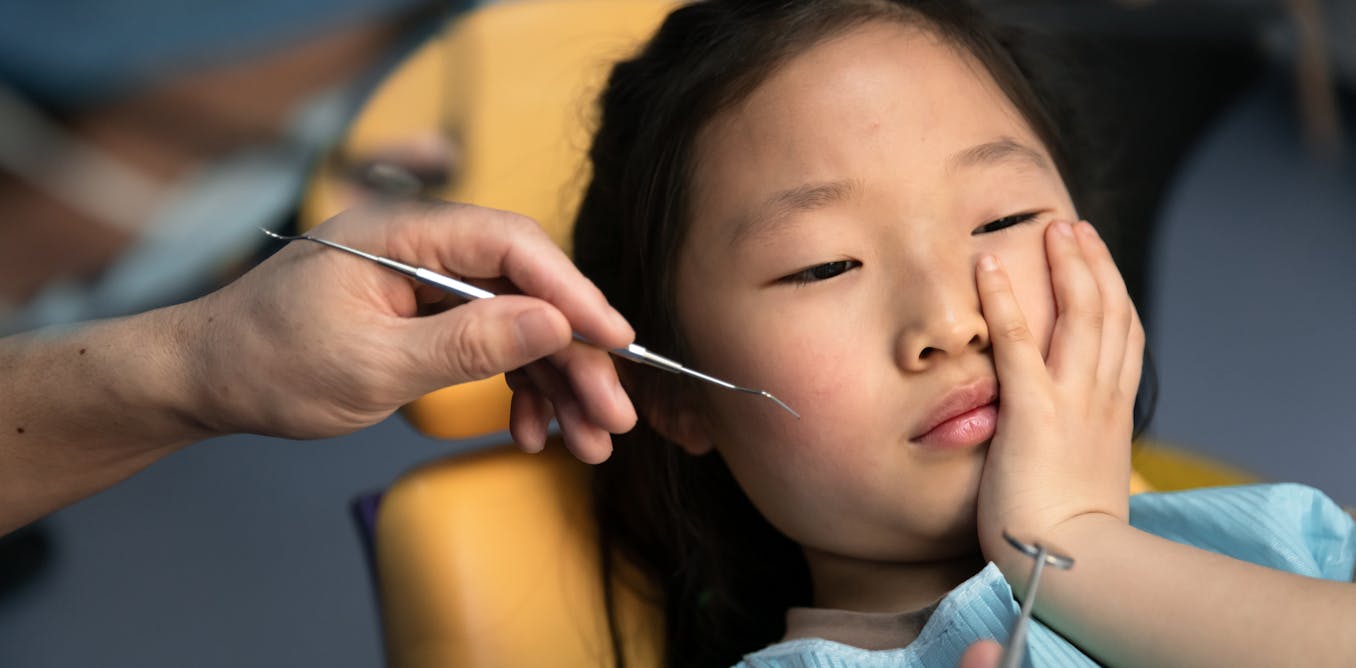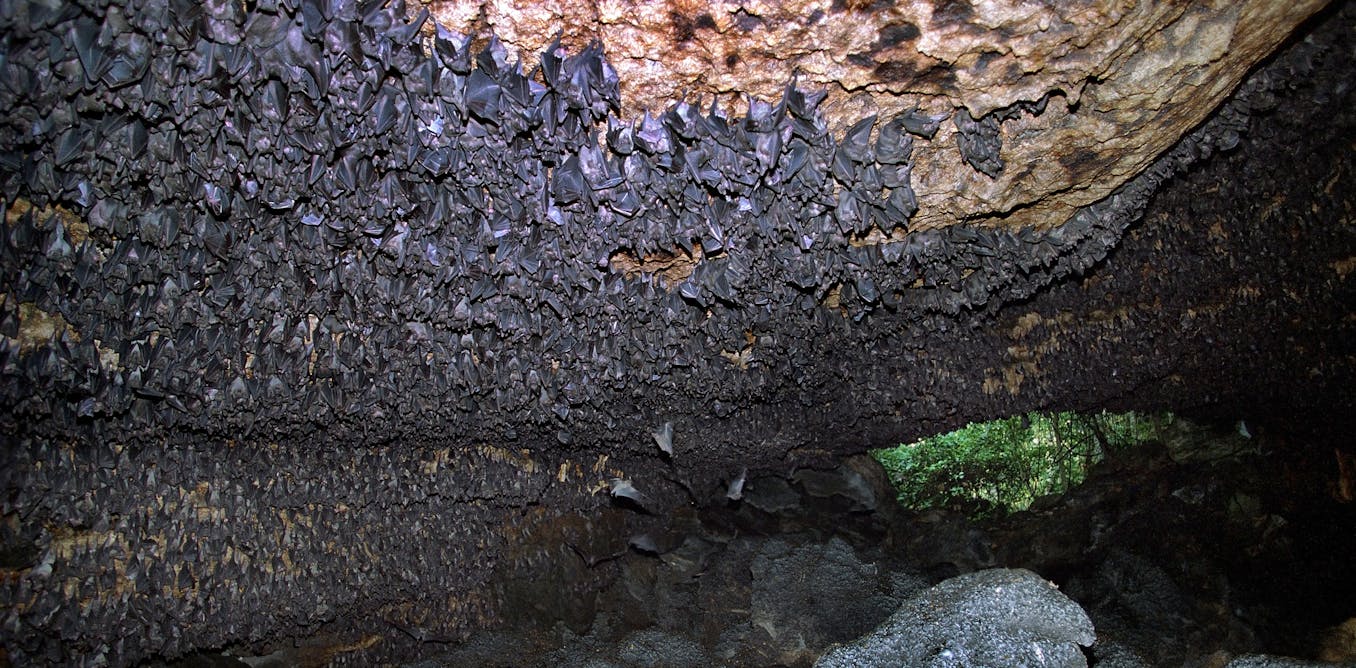It's Time for Infectious Generosity. Here's How | Chris Anderson | TED
Our world is full of challenges and problems that can sometimes make us feel overwhelmed and powerless. However, Chris Anderson, in his TED Talk, “It’s Time for Infectious Generosity. Here’s How,” shares 10 remarkable stories that showcase the power of generosity and its potential to be truly world-changing.
Anderson believes that in a world where negativity and fear seem to infect us all, we have the power to spread waves of kindness and generosity instead. He begins by sharing his personal journey, influenced by his mother’s deep generosity and how this inspired him to lead the TED conference into an era of giving. By deciding to freely share TED Talks online and allowing volunteer events to be held, their generosity sparked a global movement, leading to a billion annual views and thousands of TEDx events worldwide.
But generosity goes beyond just giving. Anderson introduces Lydia Tarigan, who, as part of a social experiment, received a $10,000 gift and instead of using it on herself, she generously gave to others and various causes. This experiment led to the surprising discovery that we, as humans, are wired to respond to generosity with more generosity.
Anderson also highlights John Sweeney’s act of generosity, which snowballed into countless acts of kindness in Ireland, illustrating the power of infectious generosity. He explains that just a small increase in infectiousness can lead to a massive impact, and the key to unlocking this is by tapping into authentic human emotion.
The message is clear: in the connected age, the most important currency is not money, but generosity. Each act of kindness, whether giving time, attention, or simple acts of human kindness, can have a ripple effect and spread contagious generosity across the world. So, let’s be brave, give what we can, and be amazed at what happens next.
Watch the video by TED
So tonight I want to share with you 10 remarkable stories and introduce you to the people behind them, because I think collectively they have created a playbook for a truly world-changing idea. It’s a new way to think about generosity. Generosity? Come on. I mean, surely that’s way too tiny a force
To pit against the ugly world we’re facing. Not necessarily. You remember this guy? This is so small, it’s invisible. But somehow it still found a way to shut down the world economy. Here’s the thing. You don’t need to be big to be powerful. You just need to be infectious. So that’s the question we’re going to ask this evening. What would it take to make generosity infectious? Can we actually picture a world where instead of infecting each other with anger and upset and fear, we’re sparking waves of kindness across the planet? So I feel like I’ve been wrestling with this question,
In one form or another, pretty much my whole life. How can you be generous? I think my mother is to blame, I’m going to say, for this. Here we go, that’s … littlun’s me. Every day my mother showed us what it was like to be just deeply generous. She’s an extraordinary woman.
And also a really hard act to follow, because my whole life, I’ve been wrestling with this need to want to be generous, but feeling often like this onerous burden. In 2006, something remarkable happened. I’d recently taken over leadership of this weird but wonderful conference called TED,
And suddenly we were in a position where we could, if we wanted to, give away all our content online because of this new technology, online video. But should we do that? We were worried that it would kill the conference that we depended on.
So I think it was my mother’s voice in my head, combined with a very brave group of people around me that gave clarity on this. We decided to start posting TED Talks and were kind of stunned at what happened. TED went viral. Suddenly our little website was being hit by millions of people.
And thousands of volunteer translators took TED into 100 languages. This was really beyond exciting, and it inspired us to double down on generosity and to start giving away our brand. Well, we thought we could let volunteers anywhere in the world run TED events, but just using the label TEDx. Seemed a little risky,
It actually was. But it led to an explosion of incredible events, things like giant theaters, far-flung cities, venues that we never could have imagined actually ourselves doing. We went to churches, mountains, prisons several times, a refugee camp and then football stadiums. This was mind-blowing to us. And if you think about it,
We just gave away our brand. And tens of thousands of volunteers around the world gave their time, their energy, their talent, their financial risk to do this. It was mind-blowing. It led to 200,000 TEDx videos being produced, a billion views annually. So it got me thinking that …
In this connected era, the rules around what we hold on to and what we give away had fundamentally changed. I mean, think about it. It’s much easier now to give away things that really matter to people at basically limitless scale, and those gifts carry with them
The most important currency of our age, reputation. So this made me think that maybe the new mantra for the connected age should be something like this: “Be brave. Give what you can, and then be absolutely amazed at what happens next.” I don’t think this is just a mantra for TED.
I think this is a mantra for every organization and actually for every individual. Well how so, how so? Well, the first piece of good news is an underreported human trait. Kind of a weird thing when you step back and think about it. Now, I want to introduce you to Lydia Tarigan,
Who’s with us here from Indonesia. Lydia, so good to see you. Two years ago, something weird happened to her. She was gifted 10,000 dollars by an anonymous donor couple on the internet as part of a weird social experiment. An economist might predict that she would spend it on herself.
That’s what rational agents do. It is not what happened. Instead, she stunned three of her co-workers with huge gifts. She gave to flood victims in Indonesia, to a pet rescue charity, to the World Wildlife Fund. She paid for expensive medical checks for her family.
She basically spent very little of that money on herself. Lydia, thank you, you’re extraordinary. And also, you are not alone. This experiment that Lydia was part of was conducted by social psychology professor Elizabeth Dunn, who’s with us. It was done in partnership with TED. And it started with this crazy tweet.
What happened is that 200 people, who did not know what they were signing up for, received what was kind of the ultimate scam email. “Congratulations! We would like to wire 10,000 dollars into your PayPal account, no questions asked. OK?” So eventually they took the money, and what happened next was amazing.
On average, across those people, across countries, more than two thirds of that money was given away generously to family, to friends, to strangers, to a huge variety of causes. Two-thirds. Liz and her team recently published a paper about this, and it led to headlines like this.
So it turns out that we are wired, we human beings are wired to respond to generosity with generosity. Now, in the connected age, that’s pretty promising right? Now there are many ways, of course, to give, rather than just money. Many of the most beautiful gifts are gifts of time and attention
And hospitality and access and just simple acts of human kindness. But all of them start right here with a generosity mindset, a willingness to pay attention to something that you wouldn’t ordinarily pay attention to. So you’re walking down the street, you notice out of the corner of your eye someone in need,
Do you turn and look at them? It’s actually surprisingly uncomfortable to do that. We usually don’t. John Sweeney was in this situation. John’s with us from Ireland, hello, John. A few years ago, he was walking down the street, and he noticed a woman in need. He brought his generosity mindset to this.
He turned, he looked at her, he got in a conversation. He ended up buying her a hot drink, a hot meal. She said to him, “It meant the world to me that you stopped and talked to me.” And it turned out, it meant the world to him as well.
He posted about this on Facebook. That post went viral. It sparked countless acts of generosity right across Ireland from adults and children alike. John’s whole life is anchored in generosity. He’s the founder of Suspended Coffees. It makes it really easy for cafes anywhere to allow their customers
To buy an extra cup of coffee for a stranger. There’s a whole world out there of caffeinated kindness. Now, what is it that makes something go viral? The first thing to say is that the difference between non-infectious and infectious is less than you think. The math here is really quite extraordinary. Think of it this way — if 10 people hear of an inspiring story
And they’re inspired to share it, on average, with nine other people, that story actually will pretty quickly fizzle away. But if it’s just that bit more compelling and they share it with 11 other people and that pattern continues, that story goes viral. So just a small difference in infectiousness
Can actually lead to a thousands-fold difference in impact. Wow. So what is it that could cause that small increase in infectiousness? Is it just like, lucky timing? Well, luck and timing probably play a part, but I want to share with you three things that I think make a big difference.
Here’s the first, unlocking authentic human emotion. This, of course, is how the dark side of the internet works, emotions like fear and anger and outrage and so forth spread. But positive emotion can also spread virally and often in the simplest ways. Catherine Barrett, who’s with us from Australia,
Discovered this in the early days of the pandemic. She posted this picture on Facebook. It was just of a box of tissues that a neighbor had left in her building saying, if anyone needs a cry, basically, take one. Box of tissues. But it moved Catherine, she posted this.
Turns out a lot of other people had amazing stories to share. 500,000 people joined this group. She called it The Kindness Pandemic. It’s still going to this day. You cannot go there without wanting to re-evaluate the role of generosity in your own life.
I think that the world is teeming with stories of kindness like we’ve heard. They’re often under the radar, we miss them. And it’s a tragedy that we do, because if you could see them, I think we would discover that actually is a truer picture of us, of humans,
Than the news we often read. Here’s the second driver: creativity. The wilder the better. So let’s see. Let’s say you want to tidy up your neighborhood, so you organize some volunteers to go out and do that, and you capture on video for social media. Well, a group of friends in Japan did that,
Except their video looked like this. If you pick up litter the samurai way, it’s no surprise that millions of people are going to view this video. This thing sparked new groups across Japan and beyond. Creativity. And there are fantastic examples of creativity that’s gone viral everywhere,
Like the French artist Ememem’s glorious fixing of potholes and other examples of urban decay in a way that lights up cities. Or the Brazilian street artist Mundano, who repainted the carts of trash pickers, giving them dignity and pride and visibility. And it sparked a movement, moved out to several other countries.
Whatever we do, if we can spark people’s imagination as well as their hearts, it will increase the efforts of our generosity. Here’s the third driver: courage. Daryl Davis, he’s an extraordinary man. He grew up wondering why it was that some people in his country, America, hated him
Just because of the color of his skin. He reached out to the local leader of the Ku Klux Klan and invited him to a meeting. As you can imagine, quite a tense meeting. Somehow they continued to meet, Daryl even attended KKK rallies. To cut a long story short,
He eventually persuaded more than 200 people to leave the KKK. Now, can you imagine why it is that that story received global media coverage? Because of his astonishing courage. And his courage meant that millions of people got to discover this essential act of generosity for the divided times that we’re in,
Bridging: the willingness to listen with respect to our enemies. Whatever type of generosity we do, if we can be braver, it will go farther. What happens if you combine all three of those things: emotion, creativity, courage? Well, then all bets are off. Amy Wolf knows this. Great to see you, Amy.
So, Amy, read the suicide statistics in her hometown a few years ago and was horrified by them, decided to do something about it. She ordered 20 signs like this. Found the courage to go and knock on doors. Surprisingly, everyone was willing to put them up in their gardens, in their yards.
And the pictures of this blew up on social media. Today, these signs have appeared in every state in America and in dozens of countries beyond. They have inspired kindness. And yes, they’ve actually saved lives. Amy has amazing stories. Or take Dylan Marron, who’s here. Dylan somehow found it in him to reach out
To his most obnoxious critics on social media and invite them to have a conversation with him. It led to an incredibly powerful podcast series that’s been seen and has inspired millions of people. Or take Joshua Coombes. He is a hairdresser who has been giving free haircuts
To people on the street who needed them, often making a huge difference to their lives and sparking a beautiful movement called Do Something for Nothing. In each case, authentic human emotion has been amplified by creativity and courage. No wonder these initiatives have blown up so beautifully.
Now, sometimes when I give these stories, people’s reaction is to nitpick a bit. It’s like they go, “Well, you know, they didn’t actually address the underlying problem here.” Or “Maybe their motivation was a little bit mixed.” Or “Philanthropy is just rich people trying to solve their consciences.” Stop it. Just stop that.
Stop looking for the bad in people. Let’s look for the good in people. If perfection is your filter, you’ll end up seeing nothing good and doing nothing good. Now, the thing about infectious generosity is that you never know how long it will travel and what the results might be.
It was only last year that I met Supriya Paul. So she told me this amazing story that 10 years earlier, she was studying to be an accountant when she and her friend Shobhit watched this classic video by Sir Ken Robinson. They were inspired by it and they wondered,
“Could we do something like this in India,” especially for those in India outside the normal education systems? So they created kind of, to her father’s dismay initially, Josh Talks. Josh Talks has been described as India’s TED Talks, and I am absolutely fine with that.
They have taken this thing to incredible scale, incredible scale. There’s like 100 million people viewing these regularly in the world’s most populous country. If TED had achieved nothing other than prompt Josh Talks, this whole thing would be worthwhile. So friends, this is a battle I think we can win.
I really think we can win. I don’t know about you, I am sick of how mean the world is. I’m sick to my stomach about it. I think you are as well, I think everyone is. I think the pendulum needs to swing, and the pendulum may indeed be swinging.
It may surprise you to know that one of the top influencers on YouTube is not a peddler of doom and gloom. He’s someone who wants to share the amazingness of life, and he does so with these kind of, crazily audacious stunts. I’m talking, of course, about MrBeast and his 200 million subscribers.
Many of his stories are anchored in generosity. And his style may not be for everyone, but he is introducing a whole new generation to the possibility that generosity is actually really cool. It’s a beautiful thing. The man who runs MrBeast Philanthropy, Darren Margolias, is with us. Inspiring man to talk to.
Darren introduced me to Milad Mirg, who was inspired also by MrBeast. Milad decided to take on this disgusting trend of food waste being dumped. He created his own videos that actually said, no, how about we make that into handmade sandwiches, like 100 of them, and distribute them on the streets?
This video ended up being seen by far more people than the trend he was combating, and I found it so inspiring to talk to Milad, Milad’s with us. I find it inspiring to talk to you, because you persuaded me that it was possible for people of good intent to win this battle.
So social media, we rightly blame it for so many things. But look under the surface and there are amazing people out there like Milad and like Massimo Orgiazzi, who, despite huge personal health issues, he spends every day sharing with the world dozens of examples of the awesomeness of the universe.
I mean, honestly, if he was the only account you followed on X, you would be happy. Finally, Giving Tuesday. How awesome is it that a single hashtag spread around the world and persuaded millions of people to donate literally billions of dollars to hundreds of thousands of organizations,
And is now going beyond that to spread a global movement of kindness. I’m in awe of what they’ve achieved. What can we do? Honestly, do anything. Do anything. Look at someone. Make eye contact with someone who feels invisible. Or go online and find someone who’s doing something that’s positive, amplify them.
Or invite a group of friends to dinner and dream together about what you might do in your community. Or listen to Sara Lomelin’s TED Talk and join a giving circle. Or just figure out some way of sharing this idea of infectious generosity however you might. And this journey,
This journey doesn’t have to be daunting. I want to leave you with something from my mother. It’s something … My mother passed away earlier this month. And she left — I feel so much gratitude. She left me with this incredible gift,
That it’s only in the last few years that I’ve fully understood it and embraced it, I would say, and I just want to share it with you. It’s this. If you commit to a journey of generosity, sooner or later, sooner or later, two amazing companions will join you on that journey. Journey mates.
Their names are meaning and happiness. So look, I just want to salute the unsung heroes who are with us tonight. You may not know it, but you are helping shape the course of history. Tonight, you may well have infected all of us with something super powerful. And here’s my wish —
That we never recover. Thank you so much. Thank you.
About TED
The TED Talks channel features the best talks and performances from the TED Conference, where the world’s leading thinkers and doers give the talk of their lives in 18 minutes (or less). Look for talks on Technology, Entertainment and Design — plus science, business, global issues, the arts and more. You’re welcome to link to or embed these videos, forward them to others and share these ideas with people you know.
Video “It's Time for Infectious Generosity. Here's How | Chris Anderson | TED” was uploaded on 01/09/2024 to Youtube Channel TED




































